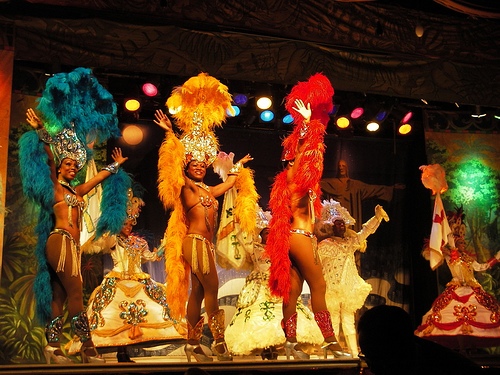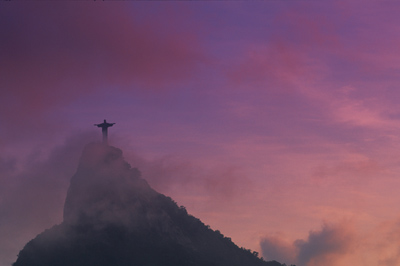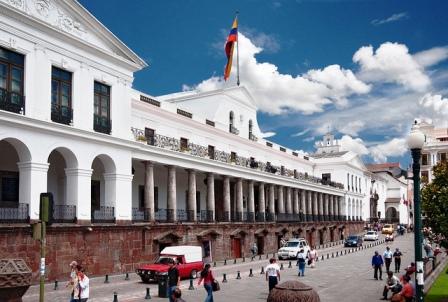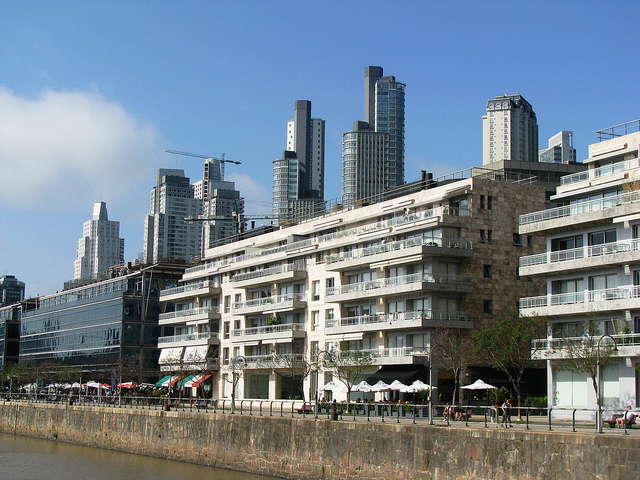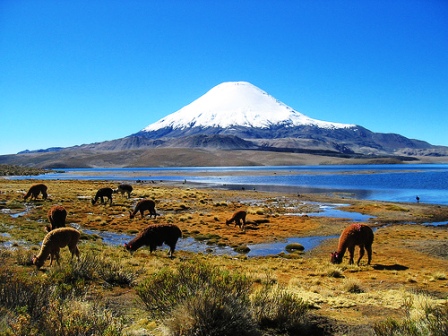Brazil covers half of the land mass of South America and has amazing natural resources. The country’s numerous cultural and historic sites as well as its diverse scenery have made it the third most important tourist destination in Latin America that was visited by more than five million people in 2010. Brazil is located in the eastern part of South America, bordering Bolivia and Peru on the west, Colombia in the northwest, Argentina and Paraguay in the southwest and Uruguay in the south. It has countless beautiful beaches and a coastline that measures over 7000 kilometers.

Brazil is often called “a melting pot of races” because its population is descended from a mix of indigenous people, Portuguese colonial settlers and African slaves that were brought in during colonial rule from the 16th to the early 19th century. In more recent years, Brazil has accepted many immigrants from many different countries, and there are sizeable immigrant groups from countries such as Italy, Spain, Germany, Japan and the Middle East.
Based on the weather in Brazil, the best time to visit is summer season from December to March, though most of the places in Brazil are hot year round. Normally the north part is wet and dry while the south part has four distinct seasons. The Amazon region has a tropical climate.
Here is a selection of popular destinations in Brazil:
- Sao Paulo: Located in the south east of Brazil, Sao Paulo is the largest and most cosmopolitan city in Brazil, and with about 20 million people in its metropolitan area, it is the largest city in the southern hemisphere. A major hub of business tourism, Sao Paulo also has an active restaurant scene and vibrant nightlife.
- Rio De Janeiro: The second largest city of Brazil, Rio De Janeiro was the country’s capital during the Portuguese colonial era. It is the most visited city in the southern hemisphere and the Rio Carnival is the biggest party in the world and extremely popular. Copacabana and Ipanema are the most popular beaches in Brazil. Other main sights include the Christ the Redeemer Statue on Corcovado Mountain, and the equally iconic Sugar Loaf Mountains that are connected by an aerial tramway. Rio de Janeiro will be hosting many events of the 2016 summer Olympics and 2014 FIFA World cup.

- Salvador is a relaxed, calm and joyful city that is known for its carnival festivities and Afro-Brazilian culture. Salvador is located in the northeast of Brazil and faces the Atlantic Ocean. The city is home to many Portuguese colonial structures that were built from the 17th to the 19th century and was designated a World Heritage Site by UNESCO in 1985. During carnival season, over 2 million people including 800,000 visitors from outside of the city join the festivities and make it the largest carnival in the world, according to the Guinness Book of Records.
- Recife: Located in the northeast, this city is often called “the Brazilian Venice” due to its location on several islands that are connected by bridges. Recife was originally founded by Dutch settlers and is close to the popular local destinations of Olinda (another UNESCO World Heritage Site) and Porto de Galinhas (a small beach town). Fernando de Noronha, an archipelago of rocky islands and a designated UNESCO Natural World Heritage Site, is also located close by.

- Florianopolis: part of this city is located on an island in the Atlantic Ocean and features an array of lakes, lagoons, nature areas and more than 40 beautiful beaches.
- Minas Gerais is a region with many historic colonial cities such as Ouro Preto, Diamantina, Tiradentes and Mariana. It also features many mineral spas, caves and waterfalls.

- Paraty is a historic coastal town located about 240 km from Rio de Janeiro and enchants visitors with its cobble-stoned streets, colonial-era churches and nearby waterfalls and islands.
- Iguaçu Falls (or Iguazu Falls): Probably Brazil’s most well-known UNESCO World Heritage Site, Iguaçu is popular for its huge waterfalls which are located on the border of Brazil and Argentina. Iguaçu Falls are taller than Niagara Falls in Canada and twice as wide with 275 cascades. They are among Latin America’s most popular tourist destinations.

- Pantanal : Located in Western Brazil, the Pantanal is a huge tropical marshland which extends into Bolivia and Paraguay as well. The Pantanal is one of the world’s largest and most diverse freshwater wetland ecosystems. This region was listed as a UNESCO World Heritage Site in 2000 and features interesting wildlife, including caimans, jaguars, capybaras, giant river otters, piranhas and many species of exotic birds.
- Manaus: Located in northern Brazil, Manaus is a large metropolitan city in the heart of the Amazon region. Manaus is located on the Rio Negro shortly before its confluence with the Rio Solimões which together form the Amazon River. The two rivers have different colours and flow beside each other for miles before mixing in eddies. The city has a grand opera theatre called the Teatro Amazonas.

Brazilian cuisine varies greatly depending on the region and reflects the history of its immigrants and native peoples. One of Brazil’s traditional dishes is Feijoada which is a hearty stew with black beans, pork and dried beef. Like Feijoada, many Brazilian meals have rice and beans with beef and salad.

Carnival is one of Brazil’s most well-known and popular traditions. The carnivals of Brazil are the biggest and hottest parties in the world and take place for a week 40 days before Easter. Famous Brazilian carnivals include those in Rio de Janeiro, Salvador, Recife and Olinda. Masses of people in colorful costumes dance Samba throughout the whole city and rival with each other for the prize for the best dance group.

Brazil is a country full of passion and energy, hot rhythms and tasty cuisine. It is a country of contrasts and offers a wide selection of destinations to the curious traveler.
